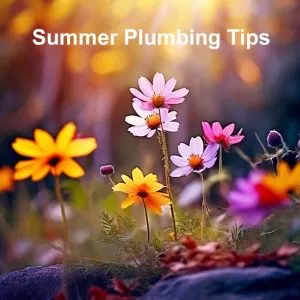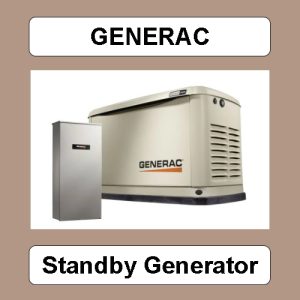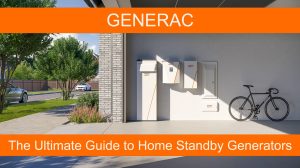Hi this is ralph from debacle plumbing Heating and cooling i just wanted to Show you a Samsung ductless heat pump system that We just completed today We actually did this heat pump system Last year we added two heads to the Existing unit that was installed last Year so the client was so happy with the First floor That they had us back to add two Additional heads for the master bedroom And for their boys rooms now it was Really difficult and challenging to get Through this crawl space that they had But i was able to do the best i could to Get some piping and wiring up through There and through this Tight little crawl space That was In the attic Area that led out to either side of the Bedrooms but we were able to get it done Took us a couple days but it got done Here’s the lines going up through and Into what is the master bedroom here’s Michael outside Getting all the connections together and Wiring setup He got he’s got his pressure gauges on There testing for leaks And then we’re going to get uh The system into a tight vacuum We have our master electrician of course Mr frank ruler of wires bognani on staff Here he’s getting the wiring all Connected a little little bit of a tight Tight mess in there for wiring But this unit um really does a great job It’s super super quiet and we put it in Heat mode because here we are that’s the Vacuum we’re going to get down below 500 Microns so we’ve got a good tight vacuum On the system And then here we are we got the boys Room heating up now it was 62 when we Turned it on before we left it was up to 68. This thing is absolutely quiet can give You heat here’s anoth the back side of The boy’s closet we had to hide the pipe Across the ceiling and that we were able To do it like that but these samsung win Free 2.0 units are fantastic They’ll be super quiet High electrically efficient will do Heating down to zero degrees outside and Provide air conditioning so if you’d Like to get a high efficient samsung Unit please give us a call or go to Debacleplumbing.com thank you
The Complete Guide to Installing a Ductless Heat Pump
Homeowners are always looking for a way to maximize the efficiency of their heating systems while minimizing their utility bills. One of the best ways to do this is by installing a ductless heat pump system. A ductless heat pump system is an efficient and cost-effective way to heat and cool your home or business. It is an ideal solution for buildings where ductwork installation is not feasible, and it can provide a cost-effective solution for areas that need supplemental heating and cooling. In this blog post, we’ll discuss the installation process for a ductless heat pump system, and how it can be a great solution for any home or business. We’ll also discuss the benefits of installing a ductless heat pump system, such as improved energy efficiency, improved indoor air quality, and lower monthly utility bills. Finally, we’ll discuss the potential costs associated with installing a ductless heat pump system, and how to make sure that you are getting the most value out of your installation.

1. Heat Pump Pre-installation assessment
Prior to installing a ductless heat pump system, a pre-installation assessment should be conducted to ensure the system’s compatibility with the home’s existing infrastructure and to determine the best placement for the system to maximize efficiency. The assessment should include an evaluation of the home’s structural characteristics, including the size of the space, the number of people occupying it, and the insulation of the walls and windows. Additionally, a professional should check the condition of existing wiring and ductwork, if any, and make sure the power supply is adequate. Once these elements have been taken into consideration, the ideal location for the ductless heat pump mini-split can be determined.

2. Installation of the Ductless Heat Pump Indoor Air Handler
The second step in installing a ductless heat pump system is the installation of the indoor air handler. This will include the necessary wiring, drainage, and connection of the mounting bracket to the wall or ceiling. After the indoor unit is installed, the refrigerant lines, electrical lines, and drain tubing should be connected to the outdoor condensing unit. The outdoor unit should then be securely mounted to the bracket and leveled. Finally, the electrical power should be connected to the outdoor unit and all of the lines should be tested for proper operation.

3. Installation of Mini-split Heat Pump Outdoor Condenser
The third step of the Ductless Heat Pump system installation process is the installation of the outdoor condenser. This unit requires a large area of open space and must be level in order to function properly. First, the condenser must be mounted securely to a concrete slab or another sturdy surface with appropriate fasteners. Next, the necessary refrigerant piping and wiring must be connected between the outdoor condenser and the indoor air handler. Finally, the outdoor condenser must be tested for proper operation before the system can be used. Once the installation is complete, the ductless heat pump mini split system is ready to provide efficient and comfortable climate control.
4. Connecting Refrigerant Lines Between Components
The fourth step in installing a ductless heat pump system is connecting refrigerant lines between components. This process requires proper alignment, soldering, and insulation of the lines. It is also important to ensure that all connections are airtight and leak-free. This step must be completed before the system can be tested and put into operation. Careful attention should be taken to ensure that all components are properly connected and no refrigerant is lost during the installation process.
5. Testing for Proper Operation of the Mini Split
After the Ductless Heat Pump system installation, it is recommended to test for proper operation. Make sure to check the air temperature at both the supply and return side for a temperature difference of at least 10°F. Ensure the fans are running properly and that the temperature readings on the thermostat are accurate and that the system is cooling and/or heating as expected. Any discrepancies should be addressed immediately and the system should be fully inspected to ensure that the Ductless Heat Pump system is operating correctly.
6. Adjusting Settings for Optimal Performance
Once the ductless heat pump system is installed, it is important to adjust the settings for optimal performance. In order to do this, you should refer to the manufacturer’s instructions and adjust the settings according to the specific location and environment. This may include changing the fan speed, temperature, and humidity control settings. You may also need to adjust the time of operation and other settings depending on the ductless heat pump system installation. It is important to remember to save the settings once you have completed the adjustments. Doing so will ensure that the system is running at its best and is properly maintained.
7. Ensuring Proper Insulation Around Components
When installing a ductless heat pump, proper insulation around components is essential to ensure the system runs efficiently and effectively. Insulate the pipes, cables, and lines that link the indoor and outdoor units, and make sure the condenser is properly insulated. The better the insulation, the more efficient the system will be and the less energy it will consume. Proper insulation should also be applied to the walls, windows, and doors where the indoor units are installed. This will help keep the temperature stable and minimize heat loss.
8. Sealing System Connections to Prevent Leaks
After the outdoor and indoor units are connected, the final step in the installation of the ductless heat pump system is sealing all the system connections to prevent any potential leaks. All joints must be sealed, including the tubing and all electrical connections. Adhesive-backed duct seals should be used on all the joints to ensure an airtight seal. Also, all the tubing must be insulated to prevent condensation from forming and water leaks. Lastly, the sealant should be applied correctly to all the exterior wall penetrations to protect against air leakage.
9. Ensuring Proper Ventilation of the Mini-split System
During the installation process of a ductless heat pump, it is important to ensure that proper ventilation is observed. This is done to maximize efficiency and ensure the safety of the system. To do this, proper access to the indoor unit and outdoor unit should be provided, along with adequate spacing between the two. Additionally, the position of the outdoor unit must be taken into account to ensure optimal airflow. Finally, all connections should be checked and verified to ensure that they are secure and sealed.
10. Completing Post-installation Assessment
Upon completion of the ductless heat pump system installation, it’s important to perform a thorough post-installation assessment. This will ensure that all components of the system are functioning as designed and that the ductless heat pump mini split is providing optimal performance. An assessment will also detect any potential issues or maintenance needs that may be required for the mini split ductless heat pump. During the assessment, technicians should check the filter, air flow, thermostat, power supply, and all connections. Additionally, the noise and vibration levels should be tested to ensure the system is operating efficiently and quietly.
In conclusion, ductless heat pumps are an excellent solution for those looking to improve their home’s comfort and reduce energy costs. With their efficiency, affordability, and flexibility, they are an ideal choice for residential and commercial spaces alike. With proper installation and maintenance, a ductless heat pump system can provide reliable and cool heating and cooling for many years.
Frequently Asked Questions
1. What are the benefits of installing a Ductless Heat Pump system?
Installing a Ductless Heat Pump system can offer many benefits. Unlike traditional air conditioners, these systems don't require a large hole in the wall for installation and don't need to be disconnected from existing HVAC units. They also require less energy to operate, resulting in lower electricity bills. Additionally, they are much easier to install.
2. What types of Ductless Heat Pump systems are available?
There are a variety of ductless heat pump systems available for both heating and cooling applications. Ductless mini-split systems are most commonly used to provide efficient, space-saving climate control for single rooms or small areas. They work by drawing in outdoor air, compressing it, and releasing it into the room as warm or cool air depending on the season. Split heat pumps are also available, which can be installed to provide energy-efficient heating and cooling in larger areas with multiple rooms. Regardless of which type of ductless heat pump installation you choose, these systems offer reliable climate control with low energy consumption rates.
3. How do I know which Ductless Heat Pump system is right for me?
When it comes to heating and cooling, you want to make sure you get the best system for your needs. Ductless heat pumps are becoming increasingly popular, as they can be installed with a mini split, allowing for both heating and cooling of your home. With a ductless mini-split system, the pump can easily be installed to heat or cool the room without the need for ducts. When deciding which ductless heat pump is right for you, consider factors such as size and BTU output, cost and energy efficiency rating, installation requirements like whether you need a drain line or not, and how much space you have available. By taking into account all these elements when selecting your heating and cooling system, you can ensure a successful installation and enjoy the perfect temperature in your home!
4. What are the installation costs for a Ductless Heat Pump system?
When you install a mini-split ductless heat pump to heat and cool your home, the cost can vary greatly depending on the size of the unit and the complexity of the installation. such systems typically require a disconnect box and other components to be installed. For larger homes or more complex installations, it is best to hire a professional installer like DiBaccoPlumbing Heating and Cooling who is familiar with ductless mini-split systems. In general, installation costs for a ductless heat pump system will range from several hundred dollars up to a few thousand dollars depending on the size and complexity of your installation.
5. How long does the installation process take?
The installation process for a mini-split system can vary in duration, depending on the complexity of the project. Generally, it takes anywhere from a few days to a week to install a ductless mini-split air conditioner. If there are any issues with the house plumbing and heating system, it could take longer as an HVAC system expert would need to be called in to ensure everything is installed properly. Additionally, if you choose to install a mini split heat pump rather than just an air conditioner, then it could take longer because there will be more parts involved. Furthermore, if you hire DiBacco Plumbing Heating and Cooling experts, they will do the installation for you, they will work quickly and efficiently and get the job done faster than if another person were doing it.
6. Are there any special considerations for installing a Ductless Heat Pump system?
When it comes to installing a Ductless Heat Pump system, there are some special considerations that must be taken into account. Ductless mini-split systems require careful planning and installation from a qualified house plumbing and heating expert. It needs to be enough room for the outdoor unit and conduit, which will carry the refrigerant lines between the indoor and outdoor units of the mini-splits. It is also important to ensure that all electrical wiring is properly done in order to prevent any potential hazards. Additionally, ductless systems require very specific measurements in order to maximize their efficiency, so it is important to consult with an experienced technician before beginning installation. In comparison with ducted split units, ductless systems are more efficient because they don't waste energy traveling through ducts or other components. For these reasons, it is important to ensure that all special considerations are taken into account when installing a Ductless Heat Pump system.
7. How often should I maintain my Ductless Heat Pump system?
Maintaining your ductless mini-split system is important for its performance and life. Generally, experts recommend servicing the system every one to two years. During this service, a technician will check for any parts that need to be replaced or repaired, as well as ensure that all components are working properly. The technician will also inspect the hole saw used when the system was installed, check the indoor evaporator units, electrical cable lines, and cables connected by the refrigerant, and verify there is no leakage from the small hole in the wall. Having a professional technician service your ductless mini split air conditioner system at least once every two years is an essential step in making sure it runs efficiently and safely.
8. Are there any safety considerations when installing a Ductless Heat Pump system?
When installing a Ductless Heat Pump system, there are several safety considerations to keep in mind. Ductless mini-split systems are connected by refrigerant and have both indoor and outdoor units that must be installed correctly for optimal functionality. When installing the indoor unit, consider where you will place it; it is best to install it near a door or window in order to create an escape route from heat and moisture. When installing the outdoor unit, be sure to either ground or mount it securely as per manufacturer instructions. Common questions when considering safety include whether or not the system can cover the entire home if a new circuit is necessary, and if any special ventilation requirements must be met. It is important to understand all of these safety concerns before beginning the installation process in order to ensure the safe usage of your new ductless heat pump system.
9. What other services are included in the installation of a Ductless Heat Pump system?
When a ductless mini-split system is installed, the indoor units are installed in the desired locations and connected to an electrical panel. The outdoor unit is mounted high on an outside wall and should slope slightly away from the building to ensure proper drainage. A professional HVAC technician will use the necessary tools to ensure that all components of the system are properly sealed, insulated, and connected. It is also important to make sure that any outdoor temperature restrictions are met for the optimal operation of the system. After everything is installed and checked, a final inspection should be done by a qualified technician to make sure that everything is working properly before it can be used. With all these services included in the installation of a Ductless Heat Pump system, you can rest assured that your home will be comfortable and energy efficient for many years to come.
10. Are there any warranties or guarantees that come with a Ductless Heat Pump system installation?
When it comes to ductless mini-split systems, you can rest assured that there are warranties and guarantees available for the system installed. The standard warranty is typically 5 years for parts and labor, depending on the specific manufacturer. It may also cover any of the indoor units installed, as well as any tools required for installation and operation. Any warranty will likely be contingent on proper installation, regular maintenance, and the use of high-quality components. There may also be extended warranties available from the manufacturer or installer that can provide additional coverage for a longer period of time. Ultimately, it's important to understand the type of warranty that comes with your specific system before committing to it.





